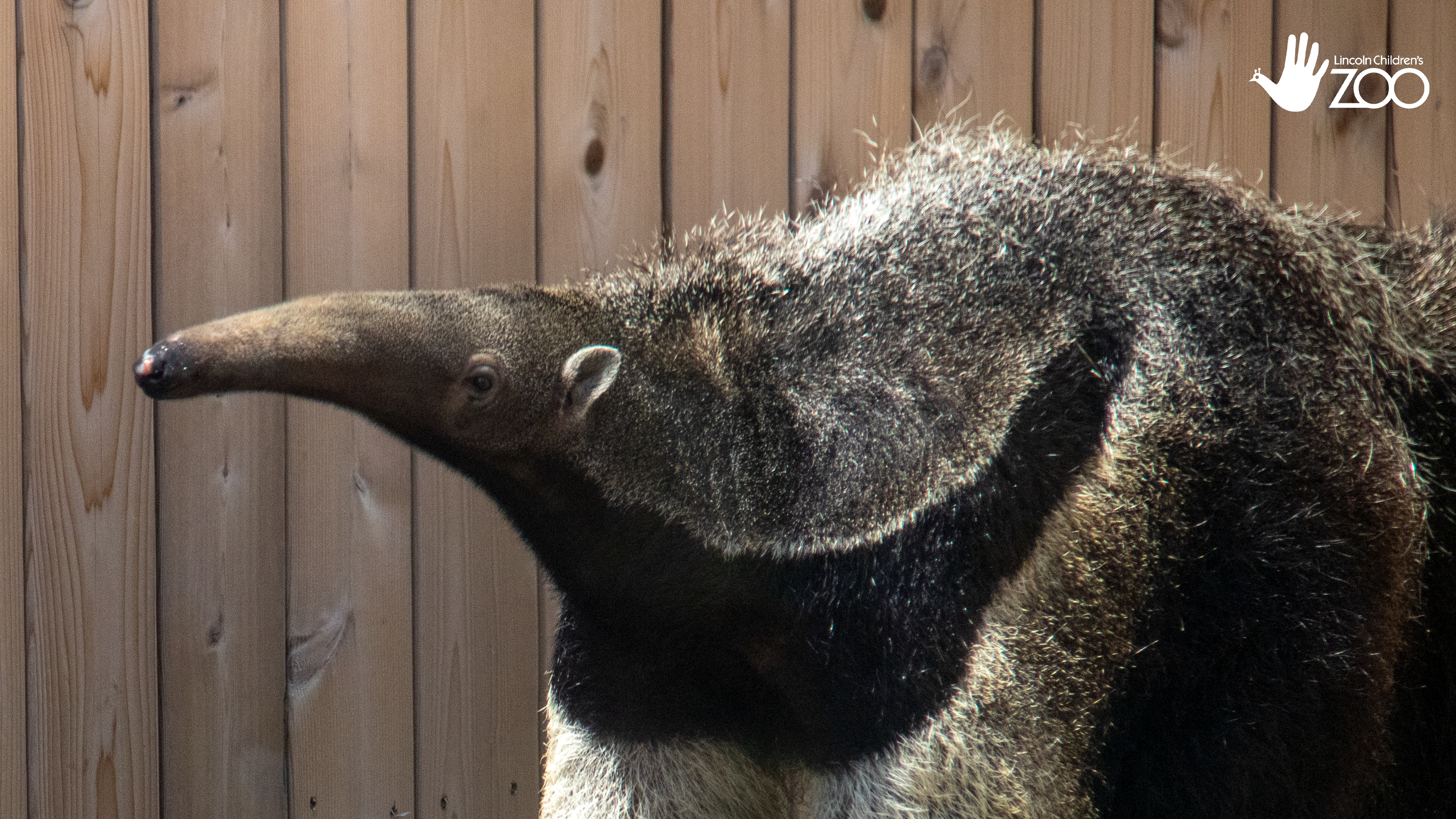Giant Anteater
Myrmecophaga tridactyla

NATURAL HABITAT
Found in grasslands, savannas, and open areas of tropical forests
DIET
IN THE WILD – Termites, ants, insect larvae, beetles and occasionally fruit
IN THE ZOO – Specially formulated insectivore diet, insects, and fruit
FASCINATING FACTS
- Giant anteaters do not have teeth; instead, they have a tongue that is 2 feet in length.
- Their tongue is coated in a sticky saliva allowing them to slurp up ants and termites.
- They can flick their tongue out up to 150 times per minute.
- If threatened, they may make a roaring sound, but typically will remain non-vocal. They will often rear up on their hind quarters and swipe with their long front claws.
- They can eat up to 30,000 insects a day.
- The giant anteater’s sense of smell is 40 times more powerful than ours.
- In order to avoid being bit by an ant during feeding, the giant anteater feeds for only a minute before moving on to the next colony.
- They have one of the lowest body temperatures of any mammal at 91 degrees Fahrenheit, which is most likely due to their insect diet that is very low in calories.
- Giant anteaters are great swimmers, using the freestyle stroke and their long nose as a snorkel.




